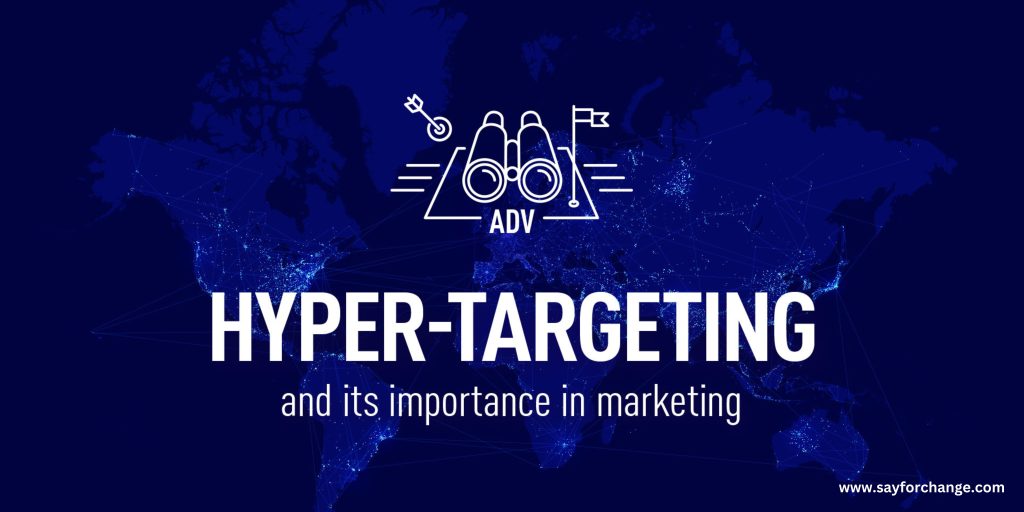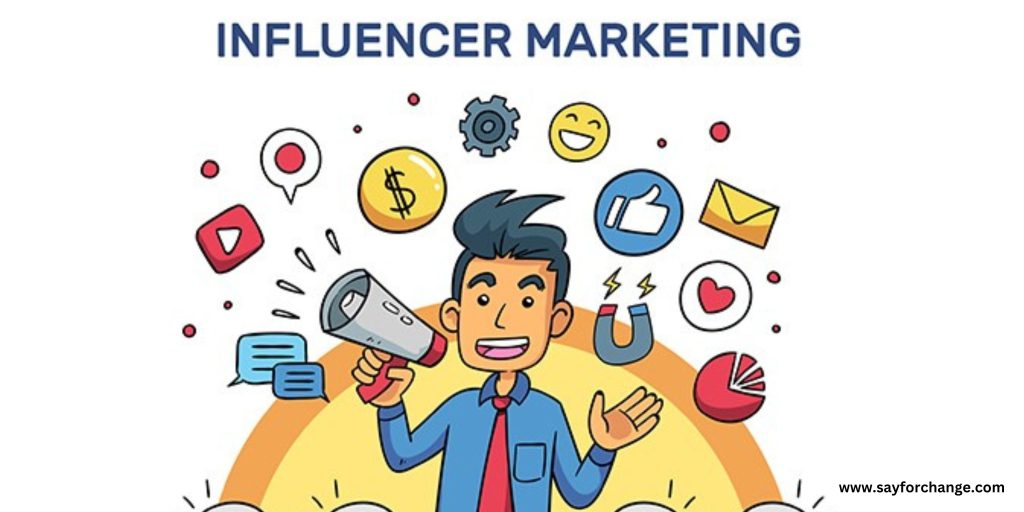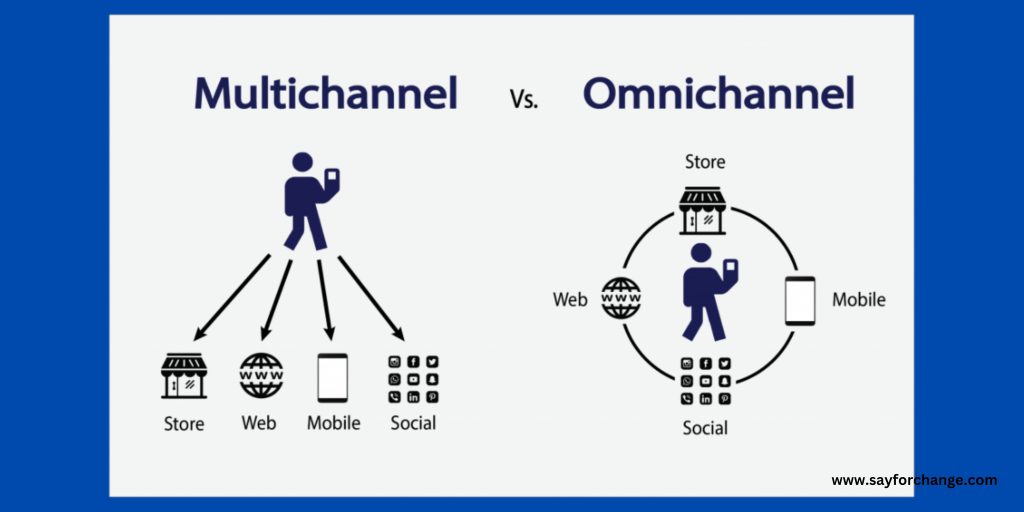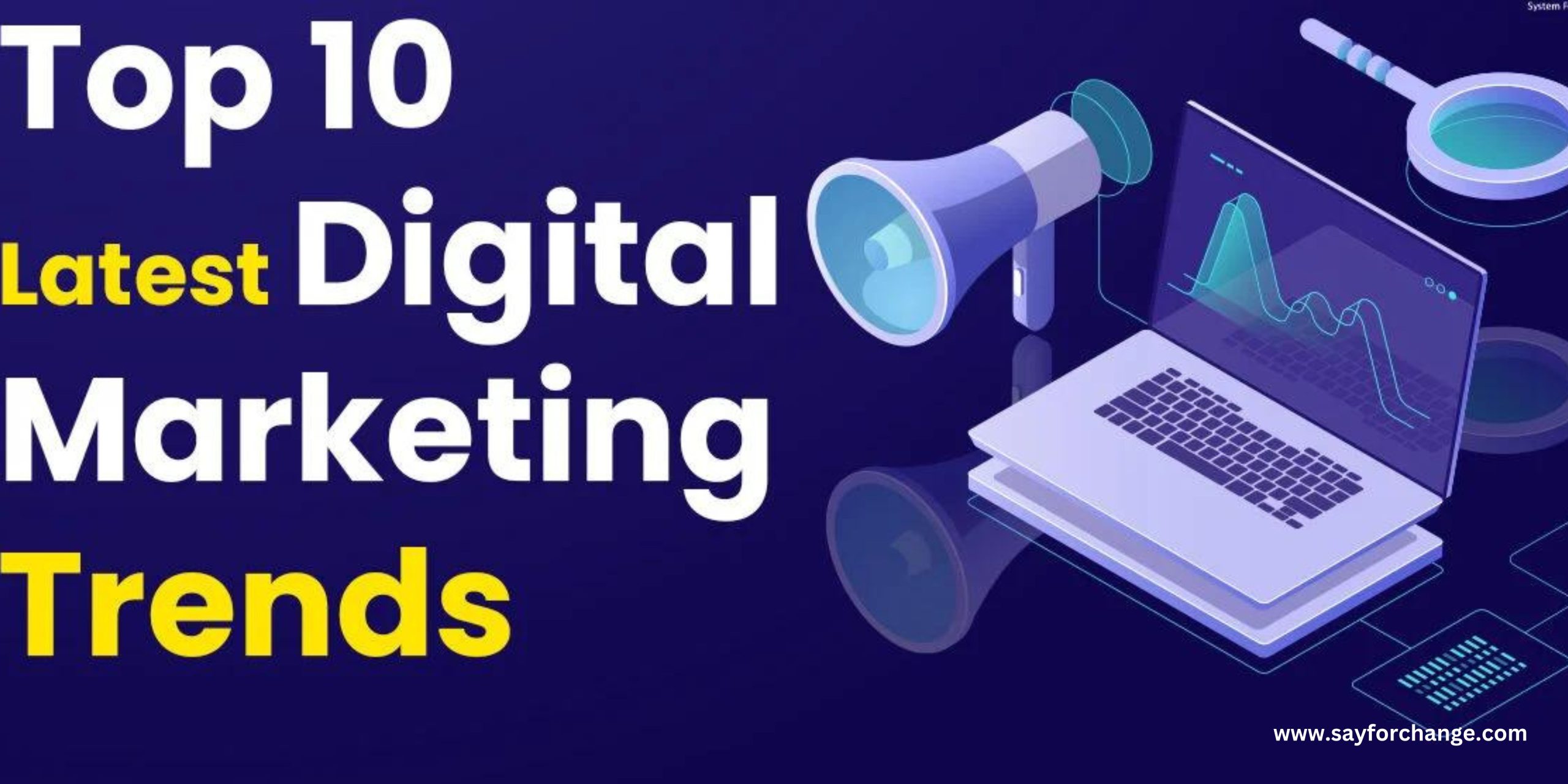Introduction
Digital marketing is a constantly changing and evolving field that adapts to technological advancements, altering consumer behaviors, and industry innovations. In today’s fast-paced digital landscape, businesses must stay updated with the latest trends and strategies to remain competitive and effectively reach their target audience. New technologies such as artificial intelligence (AI), machine learning (ML), augmented reality (AR), and voice search have had a significant impact on how marketers approach digital campaigns and customer engagement. These technologies have not only made marketing efforts more efficient and effective but have also opened up new avenues for creativity and customer interaction. Digital marketing trends include personalized experiences, visual and interactive content, and omnichannel marketing. AI and ML algorithms analyze customer data for targeted campaigns. Social media platforms like Instagram, TikTok, and YouTube make visual storytelling and video marketing essential. Interactive content like quizzes and live streams connect with consumers. Omnichannel marketing delivers a consistent message across touchpoints.
Below is a list of the top 10 digital marketing trends expected to emerge in 2024
Discover the top 10 game-changing digital marketing trends of 2024 on an exhilarating journey through the digital realm.
1. Artificial Intelligence and Machine Learning in Marketing

Have you ever wondered how companies can connect with their target audience so effectively? Well, it’s all thanks to the power of Artificial Intelligence (AI) and Machine Learning (ML), which are now essential components of modern marketing strategies. By analyzing vast amounts of data, AI algorithms can identify patterns, preferences, and behaviors, which allows marketers to create highly targeted campaigns that resonate with specific audience segments. This level of personalization enhances customer satisfaction, improves conversion rates, and boosts Return on Investment (ROI). AI-powered chatbots and virtual assistants are also changing the way customer service is offered. These intelligent bots provide instant responses to customer inquiries, and personalized recommendations, and even facilitate transactions. They offer round-the-clock support and enhance the overall customer experience. Additionally, AI-driven predictive analytics enable marketers to forecast trends, anticipate customer needs, and optimize marketing strategies in real time. By leveraging machine learning algorithms, businesses can automate decision-making processes, identify growth opportunities, and stay ahead of the competition in today’s fast-paced digital landscape.
2. Voice Search Optimization

Voice search optimization has become an important strategy in digital marketing because of the widespread use of voice-enabled devices and virtual assistants like Siri, Alexa, and Google Assistant. This trend has changed the way people search for information, moving from traditional text-based queries to more natural language interactions. One of the essential elements of voice search optimization is understanding user intent and optimizing content accordingly. Voice searches are usually longer and conversational as compared to typed searches. Therefore, marketers need to adapt their SEO strategies by using long-tail keywords, question-based phrases, and conversational content that aligns with how users speak when using voice search. Optimizing for local search is also crucial for businesses targeting voice search users. Many voice searches are location-specific, such as “near me” queries for finding local businesses or services. To improve visibility and relevance in local voice search results, businesses need to optimize their listings, use schema markup, and ensure accurate NAP (Name, Address, Phone Number) information across online platforms. Providing concise and relevant answers to common questions can enhance visibility in featured snippets and voice search results. Structured data markup, FAQ pages, and rich snippets can help search engines understand and display content as a relevant response to voice queries. In essence, voice search optimization is about understanding user behavior, optimizing content for natural language queries, and providing valuable, localized information to enhance visibility and accessibility in the voice search ecosystem.
3. Augmented Reality (AR) and Virtual Reality (VR) Experiences

Have you heard of Augmented Reality (AR) and Virtual Reality (VR)? They are amazing technologies that are changing the way businesses interact with their customers. By blending the digital and physical worlds, they offer immersive and interactive experiences that are becoming increasingly popular in various industries such as retail, entertainment, education, and healthcare. AR enhances the real-world environment by overlaying digital elements like 3D graphics, animations, and information onto a user’s view through devices like smartphones or AR headsets. Retailers are using this technology to create virtual try-on experiences for clothing and accessories, allowing customers to visualize products in their own space before making a purchase decision. On the other hand, VR creates entirely virtual environments that users can explore and interact with using specialized headsets. From immersive gaming and entertainment to virtual tours and training simulations, VR offers a wide range of experiences. Businesses are utilizing VR to provide virtual showrooms, training programs, and collaborative workspaces that transcend physical limitations and boost engagement. Both AR and VR offer unique opportunities for marketers to develop memorable and impactful experiences that resonate with their target audiences. By leveraging these technologies, businesses can increase brand engagement, improve customer satisfaction, and differentiate themselves from competitors. As AR and VR continue to evolve and become more accessible, they are expected to shape the future of marketing and consumer experiences in profound ways.
4. Chatbots and Conversational Marketing

Chatbots and conversational marketing are important tools that businesses use to provide personalized and interactive experiences to their customers. Chatbots are powered by AI and NLP technologies, which simulate human-like interactions to help users, answer questions, and guide them through the buying journey. One of the main advantages of chatbots is that they offer immediate and 24/7 support, which enhances customer satisfaction and retention. Chatbots also automate routine tasks, freeing up human resources to focus on more complex issues. Conversational marketing, which is facilitated by chatbots, is all about having personalized conversations with customers, listening to their needs, providing relevant information, and guiding them toward a purchase. Chatbots can also gather valuable customer data and insights to help businesses personalize marketing messages and offer targeted recommendations based on individual preferences and behaviors. As consumers expect more seamless and instant interactions, chatbots and conversational marketing are vital in providing convenient, efficient, and personalized experiences that promote customer satisfaction, loyalty, and business growth in the digital age.
5. Personalization and Hyper-Targeting Strategies

If you’re running a business, you need to know about personalization and hyper-targeting. These are two ways to make your digital marketing campaigns more effective. Personalization means that you don’t just address your customers by name, but you also tailor your marketing messages, content, and offers to meet their specific needs and preferences. You can use data analytics, AI, and machine learning algorithms to gain insights into customer behavior, which allows you to create highly personalized experiences that resonate with your target audience. Hyper-targeting takes personalization a step further by narrowing down your audience to highly specific segments based on demographics, psychographics, interests, purchasing intent, or specific life events. By targeting niche segments with tailored messaging and offers, you can increase engagement, conversion rates, and return on investment (ROI). These strategies not only enhance customer satisfaction and loyalty but also improve marketing efficiency and effectiveness. By delivering the right message to the right person at the right time, you can cut through the noise and drive meaningful actions such as purchases, sign-ups, or referrals. Moreover, personalization and hyper-targeting strategies contribute to a more personalized customer journey, creating a seamless and cohesive experience across various touchpoints. This customer-centric approach fosters stronger relationships, boosts brand trust, and positions your business for long-term success in today’s highly competitive digital marketplace.
6. Video Marketing Evolution

Video marketing has become a crucial part of digital strategy for businesses in recent years. This is because more and more people are watching videos online on platforms like YouTube, TikTok, Instagram, and Facebook. Businesses can now create high-quality videos using available tools and platforms to engage with their audience and tell their story creatively. Video marketing is versatile and can be used in social media, email campaigns, websites, and digital ads. It is an engaging, memorable, and shareable medium that can help businesses build brand awareness, drive conversions, and foster customer loyalty.
7. Influencer Marketing 2.0

Have you heard of Influencer Marketing 2.0? It’s a new approach to collaborating with influencers that has become popular due to changes in consumer behavior, competition, and technology. The main focus of Influencer Marketing 2.0 is authenticity and credibility. Brands are looking for influencers who share their values and can genuinely connect with their target audience. This leads to higher engagement, trust, and long-term partnerships. Data-driven strategies and performance metrics are essential in Influencer Marketing 2.0. Brands use analytics and tracking tools to measure the effectiveness of their campaigns and make data-driven decisions for future collaborations. In addition, Influencer Marketing 2.0 emphasizes diversity and inclusivity, recognizing the value of working with influencers from different backgrounds and perspectives. This approach helps brands reach a broader audience and create a sense of belonging and representation in their marketing efforts.
8. Sustainability and Ethical Marketing Practices

Nowadays, consumers care a lot about environmental and social responsibility, and businesses have taken note. Sustainability and ethical marketing practices have become incredibly important for brands. These practices include initiatives that aim to reduce environmental impact, promote ethical sourcing and production, and encourage transparency and accountability in marketing communications. When it comes to sustainability in marketing, brands need to adopt eco-friendly practices throughout the value chain. This includes using renewable energy, reducing waste and emissions, sourcing sustainable materials, and implementing green packaging solutions. By doing so, brands can appeal to eco-conscious consumers and show that they’re committed to environmental stewardship. Ethical marketing practices focus on honesty, integrity, and fairness in advertising and promotions. Brands need to avoid using deceptive or misleading tactics, respect consumer privacy and data protection, and adhere to industry regulations and standards. They can also support social or environmental causes and communicate their impact transparently through cause-related marketing. Consumers expect brands to not only offer quality products and services but also act responsibly and contribute positively to society. By prioritizing sustainability and ethics in their marketing efforts, brands can build trust, enhance brand reputation, and cultivate long-term relationships with customers who share similar values.
9. Data Privacy and Compliance

When businesses collect data about their customers, it’s important to prioritize privacy and follow the rules. This is especially true now that there are more regulations and customers are more aware of their rights. Businesses should always ask for permission before collecting personal information. They should explain why they need the information, how it will be used, and give customers the ability to manage their preferences. It’s also important to keep customer data secure. Businesses should use encryption, control access, check for security issues, and be aware of potential threats. In some places, there are specific laws that businesses must follow to protect customer data. These rules can be complicated, but it’s important to follow them to avoid getting into trouble. Finally, businesses should always responsibly use customer data. They should keep it accurate, relevant, and up-to-date. By doing all of this, businesses can build trust with their customers and show that they respect their privacy.
10. Multi-Channel Integration and Omnichannel Experiences

If you’re a business trying to provide a smooth and cohesive customer experience, you need to know about multi-channel integration and omnichannel experiences. Nowadays, customers engage with brands through multiple channels such as websites, social media, mobile apps, email, and physical stores. Multi-channel integration connects these channels to create a unified experience, while omnichannel experiences ensure consistency and continuity across all customer interactions. By using multiple channels, businesses can expand their reach and connect with diverse audience segments. Effective integration requires synchronization of data, messaging, and branding elements to provide a seamless experience regardless of the channel used. Omnichannel experiences take it a step further by enabling seamless transitions between channels and devices. For example, a customer might start browsing products on a mobile app, continue on a desktop website, and then make a purchase in-store, with all interactions seamlessly connected and personalized based on the customer’s preferences and behavior. Omnichannel experiences aim to deliver personalized and relevant content, offers, and recommendations at every touchpoint, enhancing engagement, satisfaction, and loyalty. By understanding customer preferences, tracking interactions across channels, and leveraging data analytics, businesses can tailor their marketing efforts and create meaningful connections with customers throughout their journey.
THE FINAL NOTE: Adapting to the Dynamic Digital Landscape
In conclusion, adapting to the dynamic digital landscape is imperative for businesses to thrive in today’s competitive environment. The rapid pace of technological advancements, shifts in consumer behavior, and evolving market trends necessitate continuous adaptation and innovation to stay relevant and achieve success. One of the key takeaways is the importance of embracing emerging technologies such as artificial intelligence (AI), machine learning (ML), augmented reality (AR), and voice search. These technologies present opportunities to enhance marketing strategies, personalize customer experiences, and drive growth by leveraging data-driven insights and automation. Businesses must prioritize sustainability, ethical practices, and data privacy compliance to build trust, credibility, and long-term relationships with customers. Demonstrating social responsibility, transparency, and respect for consumer privacy are integral components of a successful and ethical business strategy. Multi-channel integration and omnichannel experiences are crucial for seamless customer journeys. By connecting channels, offering personalized content, and ensuring consistency, businesses can enhance engagement and satisfaction. To succeed in today’s digital world, businesses must remain agile, adaptable, and customer-centric.
